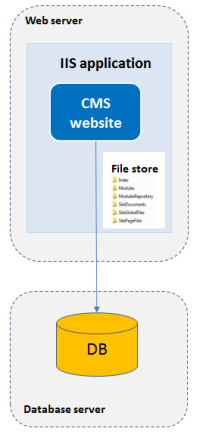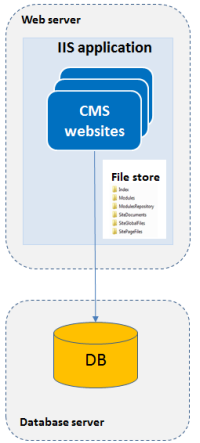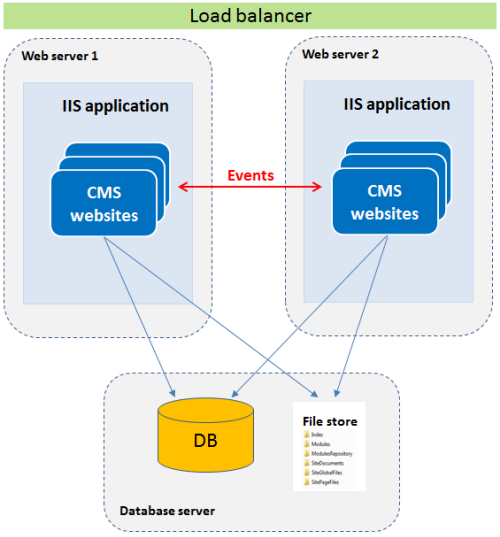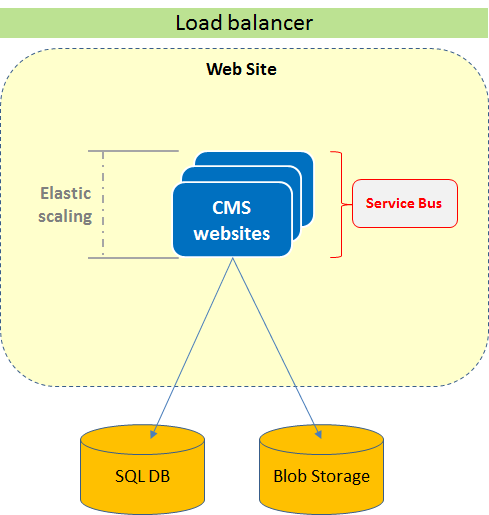CMS site solutions are based on available infrastructure, security requirements, and performance. Your solution may include on-premises deployment, a cloud environment, or a combination of both. This topic describes common deployment scenarios.
Single site, single server
The standard Episerver CMS installation consists of one CMS site, one web server, one IIS instance, one file store, and one database. This is the simplest and most common scenario.
You can choose a database on an existing SQL database instance, or the installation creates a new database for you with a file store folder structure on the web server.

Multi-site, single server
A multi-site single server is multi-tenant; a single running instance of CMS that hosts multiple websites. By default, the websites share the same database and the same file store. You must configure the site IIS to respond to multiple host names to run your websites on the same IIS application.
If you configure the IIS application to respond to any host name, you can launch new sites from the CMS admin view > Config > Manage Websites without any additional configuration needed. You need only a start page and a URL for the new site, which are stored in the database. New sites are automatically provisioned.

Multi-site, multi-server
Load-balancing manages multiple CMS sites that run on two or more separate web servers that run IIS. All the sites share the same database and file store. You can launch new sites from the CMS admin view > Config > Manage Websites without any additional configuration needed. You need only a start page and a URL for the new site, which are stored in the database. New sites are automatically provisioned.
You can load-balance Episerver CMS across multiple servers using the Episerver event management system. When an event occurs, such as a cache removal notification, that server updates the local cache and configured servers in the setup.

Cloud website setup
You can deploy multiple CMS websites to a website environment with multiple instances. The CMS sites share the same SQL database and BLOB storage that stores binary file data in the cloud environment. The sites are load-balanced, and a Service Bus manages events between the CMS websites.
Note: Deploying to a cloud environment requires each deployed application and module is designed for cloud use.

Related topics




